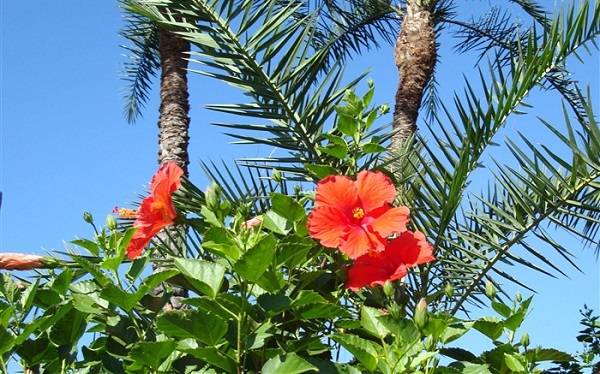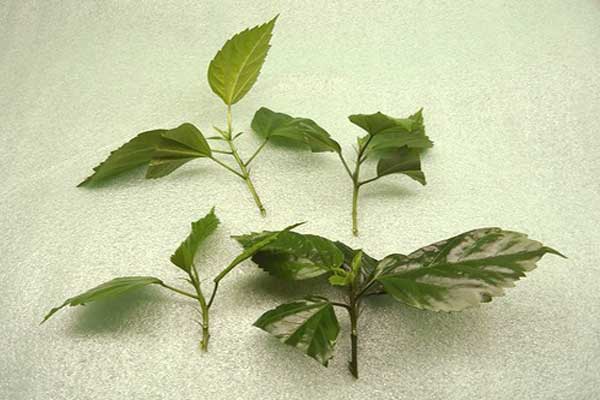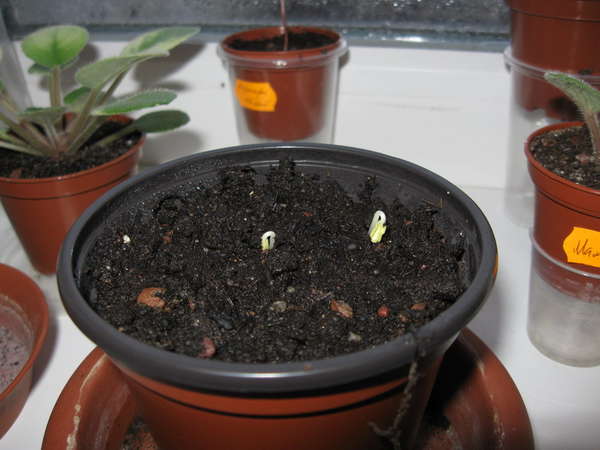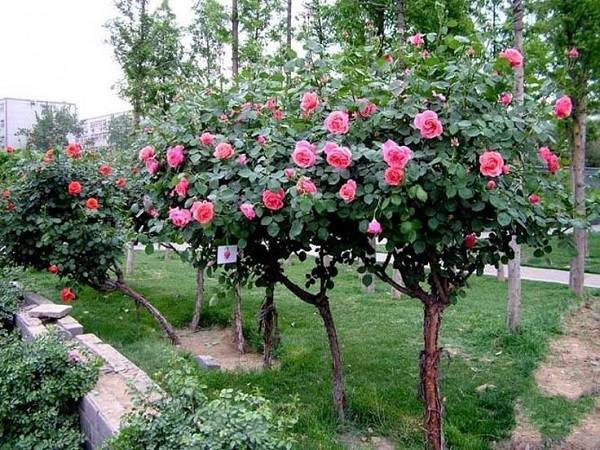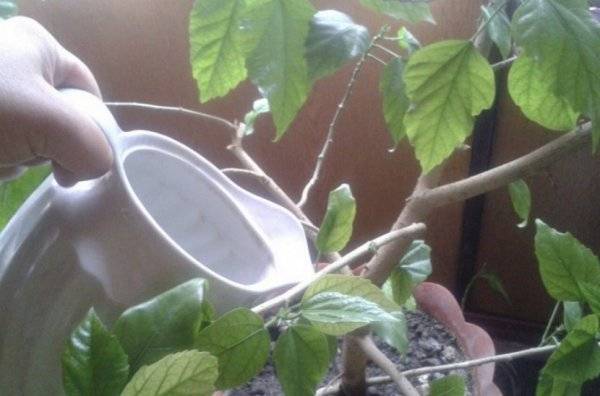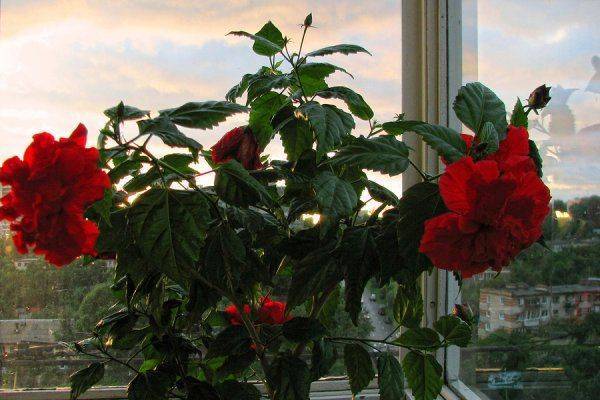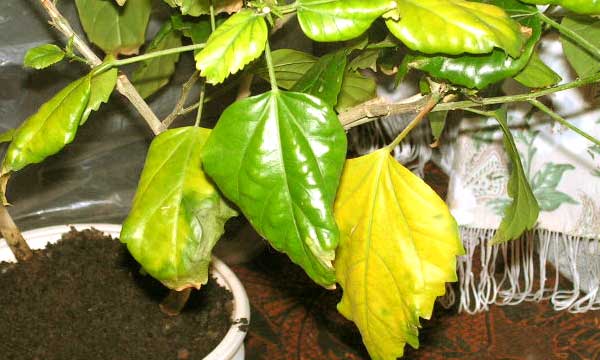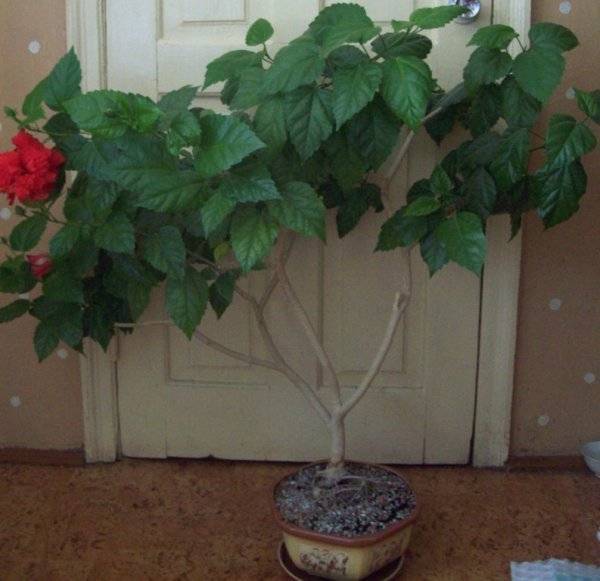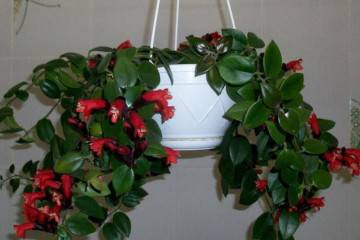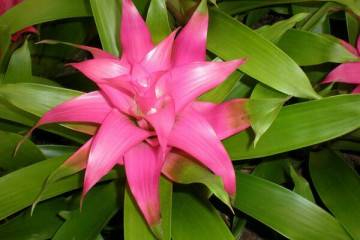Chinese rose - home care and reproduction
Content:
The Chinese rose is used to decorate residential premises, offices, and garden plots. It is often used in flower arrangements and single plantings to create landscape design. A luxurious shrub native to the Malvaceae family naturally lives in southern China and India (the name of the flower contains a clue about its origin).
Description of the Chinese rose
Unpretentiousness is one of the advantages of the Chinese rose plant, caring for it at home is simple and does not require much time and effort. The houseplant has carved leaves covered with gloss. The flower itself is quite large. It can reach a diameter of 16 cm. To date, artificially obtained varieties of hibiscus with different colors: pink, yellow, white, orange, red. A home rose tree can live for 30 years. In the wild, it grows up to 3 m.
Reproduction of a Chinese rose or indoor hibiscus
Hibiscus, in addition to decorativeness, also has useful properties: its buds are used for healing tea, and young shoots are eaten.
How to propagate indoor hibiscus? There are two main ways: by seed and cuttings.
Propagation by cuttings
The most commonly used propagation of hibiscus by cuttings. This method is simple and less labor intensive compared to growing from seeds. In this case, the young plant retains all the characteristics of the mother shrub.
Planting material - rose branches left after pruning. You can specially take a stalk for planting by cutting it off from the top. Each cutting should have at least a couple of internodes.
Rooting can happen in two ways:
- first - placing in a container with water and waiting for the appearance of roots, after which it should be transplanted into the ground;
- the second is planting in the ground, which requires an airy and light soil.
In the second case, you can add a little sand to create looseness. From above, the container with cuttings is covered with a film to create the effect of a greenhouse or a simple glass jar. From time to time, the shelter is removed to ventilate the cuttings from accumulated condensation. In the absence of ventilation, fungus may occur. The optimum temperature range is from +22 to +25 degrees. Roots should grow in 30-60 days. Then you can plant seedlings at a permanent place of growth in a pre-prepared pot with soil.
Growing from seeds
How can you grow hibiscus from seeds at home? It is worth immediately preparing for the fact that this is a long and costly method. The seeds can be purchased from the store or collected by yourself.
Growing seedlings from seeds takes place in several stages:
- For a couple of hours, the seeds are placed in water at room temperature, maybe a little higher.
- Those seeds that have sunk to the bottom are prepared for planting. Those that floated to the surface are empty and unsuitable for germination.
- A drug that stimulates growth is added to the water. Additionally, it will not hurt to disinfect the seeds in a solution of potassium permanganate.
- The seeds are laid out on damp gauze. Germination will take place on it.
- The top is also covered with a damp material.
- When the first sprouts "hatch", the seeds should be planted in small cups with soil. You can take peat tablets or prepare the soil yourself by making a mixture of peat and sand in equal proportions.
- The planted sprouts are covered with glass or foil.
From this moment, airing, spraying and maintaining the temperature at the required level (at least +25) begin.
When the seedlings form three true green leaves, they are seated in small pots. This is a kind of pick, after which they are transplanted into larger containers.
Caring for seedlings and seedlings of Chinese rose
Grooming is very important at this stage as it affects growth and development. For a beautiful bushy crown, the upper shoots are systematically pinched.
Young plants are replanted every year. In this case, the capacity is taken a little more in volume than the previous one. Drainage from fine expanded clay is placed at the bottom. When transplanting, it is worth using the transshipment method. This is the safest method for the root system of the Chinese rose. All voids are filled with soil.
When to start shaping hibiscus from scratch
Pruning for this plant is necessary. This is necessary for the formation, preservation of a dense, beautiful crown. This procedure stimulates the flowering process. First, you need to determine what the shape of the crown should be and only then proceed to pruning. As a rule, the rose is grown as a stem or as a shrub.
A standard hibiscus is formed when the seedling reaches a height of 15 cm. Pinching is carried out in the center. In this case, there is an active growth of shoots located on the sides. The trunk must be tied to a support in order to avoid damage.
When the shrub is formed, a pair of buds are left in the lower part of the central trunk. The remainder must be trimmed. After three months, the shoots are already old enough to be cut off. Additionally, remove all dry branches, as well as damaged shoots and those that grow inside the shrub or parallel to the main branches.
The best time to carry out the pruning procedure is either February or the autumn months. In the summer, it is worth leaving the shrub alone, since flowering occurs during this period. Cropping can disrupt the process. A procedure performed systematically, in accordance with all the rules, will help create a beautifully shaped bush.
Caring for an adult indoor Chinese rose tree
A tree-like shrub does not require difficult maintenance. It is enough to water, prune, fertilize on time, and create the necessary conditions for the winter period.
Watering mode
From February to mid-autumn, watering should be frequent, as the topsoil dries. Water should be used separated and warm. If water has accumulated in the pan, it is simply drained. During the growing season, it is important to maintain a humidity level of 70%. In hot summer, it is recommended to additionally spray the plant and water through a tray
Top dressing
The growing season of the plant requires additional feeding.To feed, purchased mineral fertilizers, which are made specifically for flowering ornamental crops, are suitable. When choosing a top dressing, you should pay attention to the amount of phosphorus, it should be small. Minerals alternate with organics. From organic matter, it is preferable to use an infusion on the droppings of chickens (1:20) or cows (1:12). The frequency of feeding during the growing season is once every 2-3 weeks.
Features of care during flowering
The flowering period of the Chinese rose is long - three seasons in a row, excluding winter. Although there are individual specimens that can bloom during the dormant period. True, the life span of a flower is short - only 1-2 days, after which it falls off. Later, a new bud and flower of the Chinese rose is formed.
To provide the hibiscus with good lighting, it is best to place it near windows that face southeast or southwest. During the flowering period, the temperature regime should be maintained at + 18-20 degrees. In summer, indoor hibiscus can be displayed in the garden or on the balcony. But at the same time, it must be protected from wind and drafts.
Features of care during the rest period
In winter, you need to leave the plant alone so that it can gain strength for the next flowering. Watering is reduced. Top dressing is also not applied. In order not to overflow the plant, you should check the depth of the dried soil with a stick. When only a thin layer on the surface is dry, the plant is not watered.
Comfortable temperature for the winter period ranges from +15 to +18 degrees. Its value should not be allowed below +10. With this temperature regime, the rose simply will not survive. You don't need to add extra food often during the winter. It is enough to fertilize once every 30 days with potassium and phosphorus in the complex. In winter, hibiscus may not be fed at all.
Preparing for winter
Before the onset of winter, in autumn, a massive fall of foliage can occur. Those stems that are left without leaves are simply cut off. Shoots are cut, leaving only short shoots. Watering is reduced gradually so that it does not stress the plant. Nitrogen is not applied as a fertilizer so that the shoots begin to grow actively. During this period, it is worth applying fertilizer with potassium and phosphorus (once every 30 days).
Why the Chinese rose doesn't bloom and how to make it bloom
A lot of questions are asked by novice growers on the topic "hibiscus does not bloom: what to do", specifying that care is carried out according to all the rules. One of the reasons why the Chinese rose does not bloom is the lack of light. Adequate lighting is the main condition for flowering. To correct this mistake, the pot with the plant can be taken out to the balcony or garden area.
Another common reason why hibiscus does not bloom is late pruning. The bottom line is that flowers are formed only on young shoots. To force the rose to form new buds, it is necessary to remove the dried flowers along with the shoots.
Transplanting into a pot of insufficient or excess volume is another reason for the lack of flowering. The formation of buds begins only if the entire container is filled with the root system. The buds, of course, can appear, but they immediately dry out and fall off. No flowering occurs.
Insufficient moisture, nutrition, temperature level leads to a lack of flowering. So, when "starving" from a lack of nutrients or water, the leaves begin to turn yellow.
When flowers are present on the shrub and there are few of them, and the bush itself mainly grows foliage, it means that there is an excess of nitrogen in the feeding.An insufficient amount of light can also be added here.
A Chinese rose or hibiscus is an excellent choice for decorating the space of both an apartment and open ground (street variety). This unpretentious flower, subject to simple care rules, will delight with flowering for three seasons in a row.
